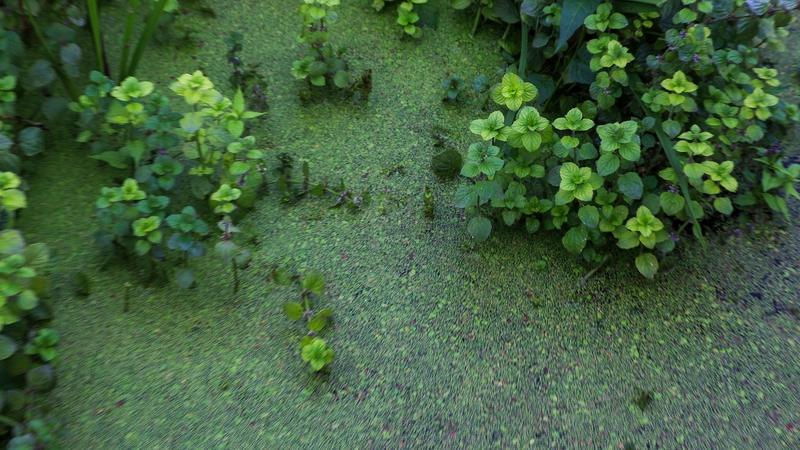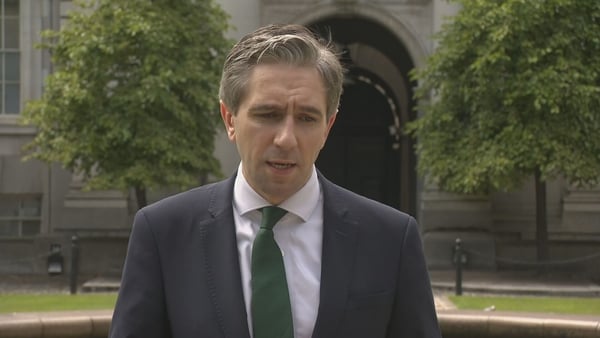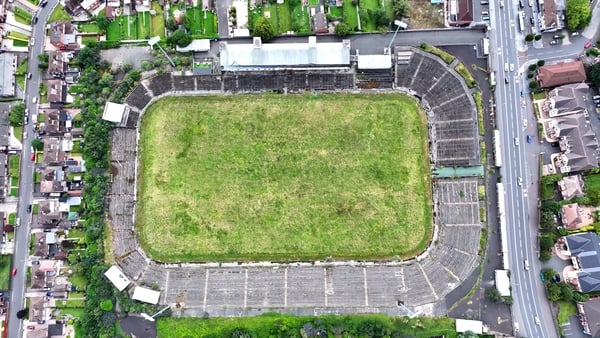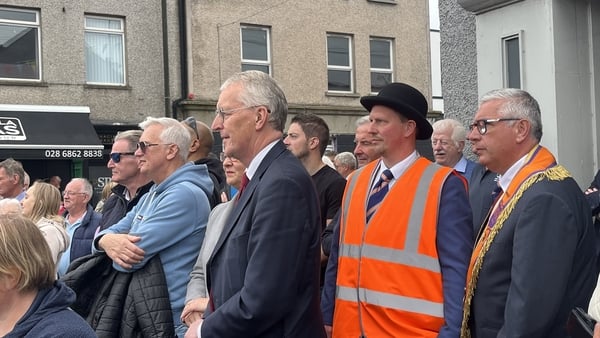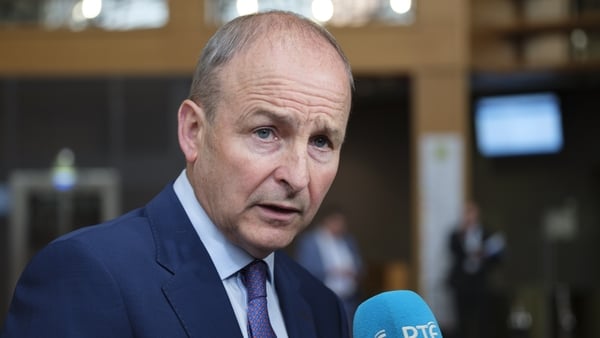Campaigners who have warned that Ireland's largest fresh water lake, Lough Neagh, is in danger due to pollution met members of the Northern Ireland Executive this morning to discuss the crisis.
The lake, which supplies 40% of Northern Ireland's drinking water and sustains a major eel-fishing industry, was severely affected by blooms of toxic blue green algae last summer.
The meeting took place in the Lock Keepers Cottage, a cafe run by a community group in the Co Antrim village of Toome.
When I visited for RTÉ News in September last year, its manager Una Johnston cut a lonely figure, standing amongst empty tables outside.
Customers couldn't stomach the stench from the canal just a few metres away. The surface of the water, which flows into the canal from the lough, was completely covered by a carpet of green algae.
It was a very different scene today.
The cafe was a hive of activity as Stormont's First and Deputy first ministers and the minister for agriculture visited the village of Toome to meet local campaigners.
Michelle O'Neill, Emma Little-Pengelly and Andrew Muir spent around an hour talking to members of the Lough Neagh Partnership group and a number of local business people, including Una Johnson.
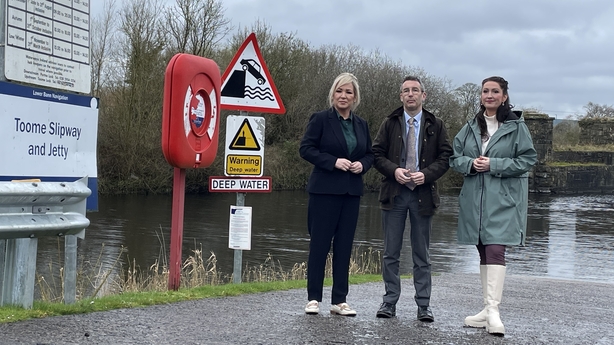
Speaking afterwards, the First Minister said agreeing a plan of action to tackle the issue was a key priority.
"From day one of our restored Executive the issue of Lough Neagh, the need to immediately arrest the situation and the need to look towards the enormous potential this beautiful lough has been a priority for us collectively," Michelle O'Neill said.
"We collectively as leas of the Executive want to ensure that we do everything to support those people that actually work on the lough, understand the lough, know its potential and that we work with them in terms of addressing the challenges that we have."
The algae that covered much of the lough and also affected many other waterways across the island of Ireland last year its caused by excess nutrients in the water, with nitrates and phosphorous from agricultural fertiliser a major factor.
Stormont's agriculture minister has said he feels a sense of shame at the environmental crisis.
Campaigners say they need action, not words, and Andrew Muir today said he agreed.
"I'm meeting with officials in the first week after Easter in terms of the draft action plan for Lough Neagh and I hope to be able to bring that to the Executive for discussion, and hopefully agreement, in the weeks ahead.
"It's what people are looking for, they're looking for actions, they're looking for short, medium and long term actions."
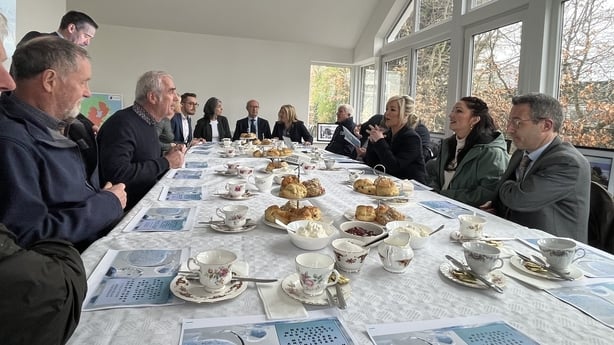
But the minister cautioned that there are no quick fixes, as the problem is one that has been in the making for decades.
Deputy First Minister Emma Little-Pengelly was also keen to stress that the crisis on Lough Neagh has been on the Executive's agenda since devolution was restored early last month.
"I think it's important to make clear that this was on the Executive agenda on week one," she said.
"And we are looking forward to seeing that action plan coming to the Executive in the weeks ahead. This is all about the key actions supported by the Executive that's going to find the solutions, we're very conscious of that."
No matter what the politicians agree to do, the algae blooms will return this summer when the water temperature increases. It's just a question of how severe the problem will be.
Peter Harper of the Lough Neagh Partnership took RTÉ News out on the waters of the lough last September to see the extent of the problem up close.
In places his boat cut through a thick layer of green sludge. In some places the algae was deep blue and vegetation that was in close contact with it had withered and died as a result of the toxins.
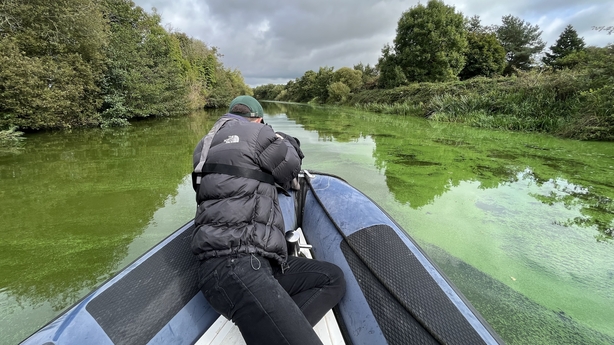
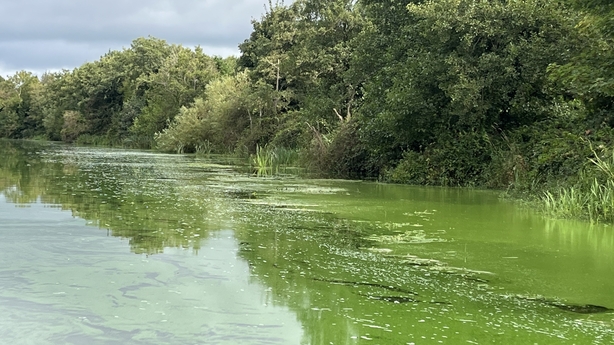
The smell was so strong around the lough last year that a number of residents living close to the shoreline contact the emergency services in the mistaken belief that there was a gas leak in the area.
Peter was one of those who attended today's meeting, and afterwards said he was encouraged by what he heard.
"It's brilliant to see the three ministers down, it's brilliant to see them working together," he said.
"The did say to us they would raise it the first day the Assembly was back and they did that. They followed that up, they've come down here.
"Andrew Muir is a minister who seems as much interested in the environment as the agriculture sector so maybe a more balanced approach, that's all very very welcome."
Una Johnston also liked what she heard.
"I have to say I'm very very hopeful about the meeting, they have all been extremely positive," she said.
"I don't believe they're just doing cheap chat, the passion is there, the will power is there.
"I do believe we will see action. In the meeting it was all about immediate, intermediate and then long term plans and they've been very week thought out."
Those who attended the meeting agreed on two things.
Firstly, the need for action to tackle the environmental crisis on the lough and many other waterways in Northern Ireland.
And secondly, the fact that there will not be a quick fix for a problem that has been building for many years.
The journey to recovery could be a long one.
